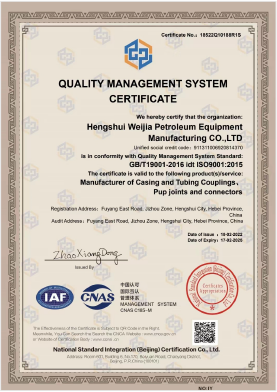- Afrikaans
- Albanian
- Amharic
- Arabic
- Armenian
- Azerbaijani
- Basque
- Belarusian
- Bengali
- Bosnian
- Bulgarian
- Catalan
- Cebuano
- Corsican
- Croatian
- Czech
- Danish
- Dutch
- English
- Esperanto
- Estonian
- Finnish
- French
- Frisian
- Galician
- Georgian
- German
- Greek
- Gujarati
- Haitian Creole
- hausa
- hawaiian
- Hebrew
- Hindi
- Miao
- Hungarian
- Icelandic
- igbo
- Indonesian
- irish
- Italian
- Japanese
- Javanese
- Kannada
- kazakh
- Khmer
- Rwandese
- Korean
- Kurdish
- Kyrgyz
- Lao
- Latin
- Latvian
- Lithuanian
- Luxembourgish
- Macedonian
- Malgashi
- Malay
- Malayalam
- Maltese
- Maori
- Marathi
- Mongolian
- Myanmar
- Nepali
- Norwegian
- Norwegian
- Occitan
- Pashto
- Persian
- Polish
- Portuguese
- Punjabi
- Romanian
- Russian
- Samoan
- Scottish Gaelic
- Serbian
- Sesotho
- Shona
- Sindhi
- Sinhala
- Slovak
- Slovenian
- Somali
- Spanish
- Sundanese
- Swahili
- Swedish
- Tagalog
- Tajik
- Tamil
- Tatar
- Telugu
- Thai
- Turkish
- Turkmen
- Ukrainian
- Urdu
- Uighur
- Uzbek
- Vietnamese
- Welsh
- Bantu
- Yiddish
- Yoruba
- Zulu
api casing sizes
Understanding API Casing Sizes A Comprehensive Overview
The American Petroleum Institute (API) has established standards that play a crucial role in the oil and gas industry, particularly concerning the casing used in drilling operations. Casing is a series of steel pipes that are inserted into a drilled well to provide structural integrity, prevent the well from collapsing, and protect both groundwater and surface environments from contamination. One of the most critical factors in the casing design process is its size, which is governed by API standards.
What are API Casing Sizes?
API casing sizes refer to the dimensions of the steel pipes classified under the API specifications. These specifications provide guidelines for the manufacturing, testing, and application of casing pipes used in drilling operations. The importance of adhering to these sizes cannot be overstated, as they are designed to ensure safety, efficiency, and the overall success of well operations.
Casing sizes are typically denoted by their nominal diameter in inches and their wall thickness. For instance, a common casing size is referred to as 5½-inch casing, which indicates that the pipe has a nominal outer diameter of 5.5 inches. The thickness of the casing wall is also an essential factor, as it contributes to the pipe's ability to withstand various pressures and external forces during drilling.
Types of Casing
There are several types of casing that are categorized based on their applications and installation phases
1. Surface Casing This is the first casing installed in a well, protecting fresh water formations from contamination. It is typically set at a shallow depth and serves as a barrier to surface pressures.
2. Intermediate Casing Installed after the surface casing, intermediate casing is designed to provide additional protection in deeper sections of the well. It is usually employed to isolate pressure zones and stabilize the wellbore.
3. Production Casing This casing is installed to facilitate the extraction of oil and gas from the reservoir. It is set at the total depth of the well, allowing for the flow of hydrocarbons to the surface.
api casing sizes

API Specification Ranges
The API specifications for casing fall into various categories, denoted by the grades of pipe. Some of the commonly used grades include
- K55 Mainly used for lower strength requirements, suitable for shallow wells. - J55 A general-purpose grade often utilized in surface casing to manage lower pressures. - L80 Designed for moderate pressures and is often used in intermediate casing applications. - P110 A high strength grade that can withstand high pressures, typically employed in production casings in deeper wells.
Each of these grades also has specified minimum yield strengths, which indicate the amount of stress a casing can endure before deforming.
Factors Influencing Casing Size Selection
Selecting an appropriate casing size depends on several factors, including
- Well Depth Deeper wells generally require a stronger and thicker casing to handle the increased pressure. - Formation Pressure High-pressure formations necessitate thicker casing walls with higher strength grades. - Environmental Conditions The surrounding geological conditions can affect the stability of the wellbore and influence casing choice.
Conclusion
In summary, API casing sizes play a pivotal role in the safe and effective drilling of oil and gas wells. Understanding the nuances of casing types, specifications, and selection factors is crucial for drilling engineers and operators. By adhering to API standards and carefully considering the specific requirements of each well, companies can maximize their operational efficiency while ensuring safety and environmental protection.
-
Tubing Pup Joints: Essential Components for Oil and Gas OperationsNewsJul.10,2025
-
Pup Joints: Essential Components for Reliable Drilling OperationsNewsJul.10,2025
-
Pipe Couplings: Connecting Your World EfficientlyNewsJul.10,2025
-
Mastering Oilfield Operations with Quality Tubing and CasingNewsJul.10,2025
-
High-Quality Casing Couplings for Every NeedNewsJul.10,2025
-
Boost Your Drilling Efficiency with Premium Crossover Tools & Seating NipplesNewsJul.10,2025







